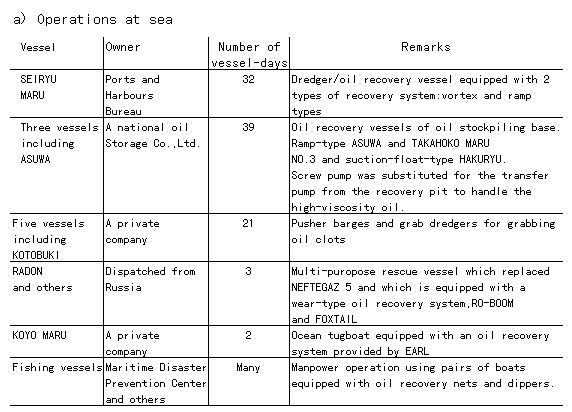Despite their inferior suction ability to vacuum cars, mobile concrete pumps were used safely because of their advantageous features - long suction lines and availability of remote control even under unfavourable sea and weather conditions.
(3) Recovery of oil washed ashore on the coast
The drifting oil that had reached ashore was removed manually from the coast by numerous people. Oil washed ashore on the sandy beaches was collected by heavy machines such as bulldozers and back hoes. The collected oil was separated from sand afterwards.
Oil solidified in the sand was first subjected to a water jet to drive it onto the water surface and then the separated oil was recovered. Operations for recovering drifting oil and oil washed ashore were performed both on the sea and on the coast. The operations involving vessels at sea were completed on 20 February, while those on the coast were finished at the end of April. After these dates, operations related to oil recovery were continued -cleaning the coasts and removing oil on and between the tetrapods and in isolated places inaccessible either from sea or land until June.
4. Materials and Equipment Used
The materials and equipment used for recovering drifting oil and oil washed ashore include:

Other vessels engaged in oil recovery operations include patrol boats, Self-Defense Force vessels, and fishing inspection boats.
The total amount of oil/water mixtures recovered from the sea is about 8,700kL.